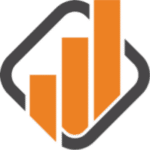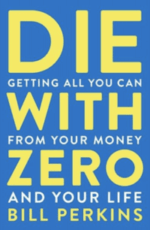Should I track and use the yield on cost for my investments?
This is a very simple question but a critical one to managing your portfolio long term.
When I first started investing, I got set up to track my yield on cost and paid close attention to it. I even thought of not selling a stock because my yield on cost was high, and I liked to see it … That was a mistake.
At the end of the day, a yield on cost of 10% doesn’t change anything to the dividend/distribution or the number of shares. If you have 100 shares and an annual dividend of $5 per share, you get $500 for the year. That’s all there is to it.
A Little Tour Down Memory Lane
In 2009, when I started investing with dividend investing, I was in my 30s and in the accumulation stage. However, I was building the exact retirement model portfolio and focusing on yield on cost. A few years later, I realized that my portfolio growth was limited to just the dividend plus a few percentage points.
Using the rule of 72 and a 7% return, it would take me ten years to double my money. That was not good enough for me in my 30s.
The yield on cost tells you how much your invested money is working at, but it ignores time as a factor, and it has no correlation to the growth of your portfolio as you look at the market value.
It also has no correlation to your portfolio income, even if you convince yourself that all that matters is your invested money.
No one invests on day one to pay bills from the income. Everyone invests to build a larger nest egg, and the total value is what you pay attention to. The same goes for the yield.
What Does Yield On Cost Tell You?
The yield on cost is just a feel-good number. There are no decisions to be made with it.
As mentioned, the yield on cost keeps increasing after 20 years if you have a dividend growth stock. What does it mean to have a yield on cost of 30%? Nothing.
My first thought would be to say, “you must have had the stocks for a long time,” and then wait to hear that it was 20 years… Then I would ask what the annual rate of return has been? and I would get a blank look because the investor would probably not know.
In the above example of 100 shares with a $5 annual dividend, you have a 5% yield and that’s an important number from a previous Q&A question about yield ratio for your portfolio. The market yield is the only number you want to use to evaluate options or compare portfolios.
My portfolio yield on cost is 4.28%, while my yield is 1.92%. The 1.92% represents the reality of my dividend growth portfolio, as you can see the ratios of yield and dividend growth.
| wdt_ID | Dividend | No Growth | < 6% Growth | > 6% Growth | > 10% Growth |
|---|---|---|---|---|---|
| 2 | None | 6.90 | 0.00 | 0.62 | 0.00 |
| 3 | Yield < 2% | 5.49 | 0.00 | 13.19 | 47.54 |
| 4 | Yield > 2% | 0.00 | 0.00 | 11.71 | 4.64 |
| 5 | Yield > 4% | 0.00 | 0.00 | 6.26 | 0.00 |
| 7 | Yield > 6% | 2.53 | 0.00 | 1.12 | 0.00 |
What Should I Look At?
The market yield is what you need to pay attention to as it reflects how much money your portfolio is generating, and it will help to know what to do with your withdrawals.
I track 2 metrics with my portfolio: market yield and annual rate of return. Both have an inverse relationship. If the market yield goes up, then the annual rate of return goes down, and vice versa.
This is why I use dividend growth investing in the accumulation years and will switch to income investing in retirement. Look at the TFSA growth when you can get good return.


Dividend Earner,
I totally agree with your rationale. Yield on cost is nothing more than a feel good metric that is widely misunderstood. It really irks me to see an investor loosely use the word yield when they really are referring to yield on cost. Many newbies couldn’t tell you the difference.
Like you I also track the 2 metrics you mention, ie; market yield and annualized total return. However, I also track “dividend growth rate” which is important to a retired investor like myself. I want to see my annualized DGR meet or exceed the inflation rate so my income remains sufficient for my growing retirement needs.
Ah, good addition with the dividend growth rate.
I have it per holdings but I have not really focused on the aggregated or per account as the account is probably important.
Great insight ….thanks ! I tend to look at Div Growth rate and debt …as well as P/O ratio and AFFO, revenue growth and earnings growth . How a company performed in 2008 and May of 2020 and the like , These are just some of the metrics I look at. Happy investing gang ! James V
I agree with your viewpoint about yield on cost and about DGR being a much more appropriate metric to use. If the yield on cost is going up it simply means the dividend has been growing; which is a good thing, but doesn’t directly reflect one’s current income stream if taking the divs as cash (which is what many retirees do).
I highly reccomend anyone reading this to also look at the Dividend Earners article on his dividend matrix . You see a bit of it here . I took the 20 odd dividend stocks I owned and did the same. I was taken back by the number of shares that had pretty good dividend yield% but not so good dividend growth %. I’m in the process of having a more balanced portfolio
Much appreciated! Glad someone else find it useful.
I am bit 50-50 on this. Have been following John Heinzl’s article as well and his recent article (Sep-30-2022) in TGAM: https://www.theglobeandmail.com/investing/investment-ideas/article-yield-hog-dividend-growth-portfolio/ talks about feel good factor during the inflationary times for those who invest and forget compared to those who perform continuous investments for the same dividend paying baskets of stocks/ETFs
I can’t read the article behind the paywall. I don’t know if he reaches a conclusion that you could share.
Can outline what is your 50-50 thoughts on this?
Respondents so far appear to be largely in agreement. I AM NOT. As a matter of fact I used to focus on dividend yield on market. But that only tells you the starting point. Like some others, I also like to ascertain the future expectations of the diovidend/ sustainability and growth. BUT what I learned the hard way, if the return on cost is bellow the return on market of otherwise comparable equities ( i.e same stability/ sustainability and growth expectations, THE CRITICAL factor to be added before making a decisionis the NET AFTER TAX proceeds of a sale. Compare the yield you receive on the NET AFTER TAX ( and transaction cost ) yield with the market yield of any alternatives
Thanks for your comment.
You do bring a different angle but most people invest in tax-free account for the most part. So the tax is hardly relevant in most cases.
I also don’t think taxes apply to Yield On Cost. Say you have apples and they pay a dividend and then you have oranges and they don’t pay a dividend. The tax rate is different. Technically, the oranges are better for taxes in a taxable account.
As for your return on market comparison, it’s interesting, how does the formula actually looks like? Does it change after 10 years? or 20 years?